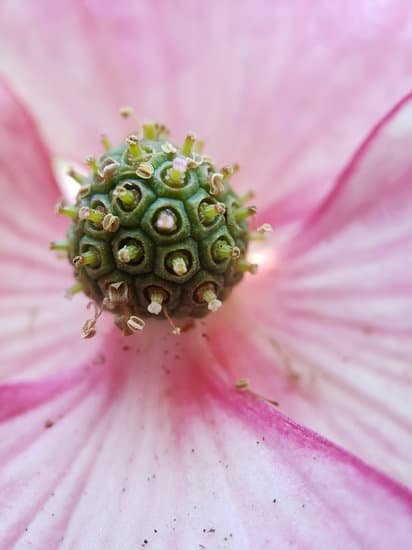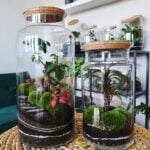
Herb gardening is not only a fulfilling and rewarding hobby, but it also comes with a myriad of benefits for both your mind and body. There’s something magical about growing your own herbs and having them readily available whenever you need them in your delicious culinary creations or natural remedies.
In this article, we will delve into the joys and advantages of herb gardening, exploring why it is a worthwhile endeavor for anyone with a green thumb or even just a budding interest in gardening.
One of the primary perks of herb gardening is the satisfaction that comes from nurturing plants from seeds or seedlings to fully-grown herbs. Whether you have a sprawling garden or limited space on a windowsill, tending to these aromatic plants can bring immense joy as you witness their growth and development over time. The sense of accomplishment that accompanies successfully growing your own herbs is unparalleled.
Beyond the emotional rewards, herb gardening also offers a plethora of health benefits. Herbs are known for their medicinal properties and can be used as natural remedies for various ailments. From soothing chamomile tea to relieve stress to harnessing the anti-inflammatory properties of turmeric, incorporating homegrown herbs into your daily routine can help promote overall well-being.
In the following sections of this article, we will explore how to choose the right herbs for your garden, set up and design your herb garden effectively, provide essential tips for beginners, master different herb gardening techniques, offer advice on proper maintenance strategies and reveal creative uses for homegrown herbs beyond just cooking. So let’s embark on this delightful journey into the world of herb gardening together.
Choosing the Right Herbs for Your Garden
When it comes to herb gardening, choosing the right herbs for your garden is essential. Not all herbs thrive in the same climate or have the same growth requirements, so it’s important to consider your preferences, climate, and available space when selecting which herbs to grow. This comprehensive guide will provide you with everything you need to know about choosing the ideal herbs for your garden.
Before you start selecting herbs, consider what you plan on using them for. Are you interested in cooking with fresh herbs? Or perhaps you want to focus on medicinal herbs for herbal remedies. Knowing your intended use for the herbs will help you narrow down your options.
Climate is another crucial factor to consider when choosing herbs for your garden. Different herbs have different temperature and sunlight requirements. Some may thrive in hot and dry conditions, while others prefer cooler temperatures and partial shade. Researching which herbs are best suited for your specific climate will ensure that they thrive in your garden.
Lastly, think about the available space in your garden. Herbs can be grown in containers, raised beds, or directly in the ground depending on the amount of space you have. Certain herbs like mint can be invasive and take up a lot of room if not contained, so keep that in mind when planning your garden layout.
| Herb | Characteristics |
|---|---|
| Basil | Easy to grow; versatile herb used in various cuisines; prefers warm climates. |
| Rosemary | Drought-tolerant; aromatic herb with needle-like leaves; requires well-drained soil and full sun. |
| Lavender | Fragrant herb with medicinal properties; thrives in dry, sunny locations; attracts pollinators. |
Remember, this is just a small selection of herbs. There are many more options to choose from based on your preferences and needs. By taking into account your preferences, climate, and available space, you’ll be able to select the ideal herbs for your garden and enjoy the benefits they offer.
Preparing and Designing Your Herb Garden
When it comes to preparing and designing your herb garden, there are several key factors to consider. The first step is to prepare the soil. Herbs generally prefer well-drained soil, so make sure you have good drainage in place. You can achieve this by adding organic matter such as compost or well-rotted manure to improve the soil structure.
Once you have prepared the soil, it’s time to choose the proper containers for your herbs. The choice of containers will largely depend on the space available and personal preference. For small gardens or balconies, opt for pots or containers that can be easily moved around. If you have a larger garden, consider planting directly in the ground or using raised beds for better control over soil conditions.
In determining the ideal location for your herb garden, keep in mind that most herbs thrive in full sun. Aim for at least six hours of direct sunlight per day for optimal growth. However, some herbs like mint and parsley can tolerate partial shade as well. Additionally, consider proximity to a water source as herbs require regular watering.
The layout of your herb garden is another important aspect to consider. Group herbs with similar watering and sunlight requirements together to make maintenance easier. Consider planting taller herbs at the back of beds or containers to provide shade for shorter ones. You can also incorporate pathways between herb beds for easy access and maintenance.
Overall, by following these steps and considering factors such as soil preparation, container choice, location, and layout, you will be well on your way to setting up a successful herb garden. Remember that each herb has its own unique needs and preferences, so do some research on specific varieties before planting. With proper preparation and thoughtful design, your herb garden will flourish and provide you with an abundant supply of fresh, flavorful herbs for various purposes.
| Factors to Consider in Preparing and Designing Your Herb Garden |
|---|
| Soil preparation |
| Container choice |
| Ideal location |
| Garden layout |
Essential Tips for Herb Gardening Beginners
Starting an herb garden can be an exciting and rewarding endeavor, especially for beginners. However, it’s important to have a solid foundation of knowledge to ensure success. Here are some essential tips, tricks, and common mistakes to avoid for novice herb gardeners:
- Start with Easy-to-Grow Herbs: As a beginner, it’s best to start with herbs that are known for their resilience and adaptability. Some great options include mint, basil, chives, parsley, and thyme. These herbs are relatively low-maintenance and can thrive in a variety of growing conditions.
- Understand Your Herb’s Needs: Different herbs have different requirements when it comes to sunlight, water, and soil conditions. Take the time to research each herb you plan to grow and understand its preferred growing environment. This will help you provide the necessary care and create an optimal growing environment for your plants.
- Provide Proper Drainage: Good drainage is crucial for the health of your herb garden. Make sure your pots or planting beds have drainage holes at the bottom to prevent waterlogged soil, which can lead to root rot. You can also add a layer of small rocks or gravel at the bottom of containers to aid in drainage.
- Water Wisely: Overwatering is one of the most common mistakes made by beginner gardeners. It’s important to find a balance between underwatering and overwatering your herbs. Generally, herbs prefer slightly dry soil rather than being constantly soaked. Check the moisture level of the soil regularly by sticking your finger about an inch into the soil – if it feels dry at that depth, it’s time to water.
- Prune Regularly: Regular pruning not only helps maintain the shape and size of your herbs but also encourages healthier growth and prolongs their lifespan. Pinch off any dead or yellow leaves as they appear, as well as any stems that have become leggy or overcrowded. This will promote bushier growth and prevent your herbs from becoming overly woody.
By following these essential tips, beginner herb gardeners can set themselves up for success and enjoy the pleasures of growing their own herbs. Remember to start small and gradually expand your herb collection as you gain experience and confidence in your gardening skills. With time and practice, you’ll soon be harvesting a bountiful supply of fresh and flavorful herbs to elevate your culinary creations and enhance your overall well-being.
Herb Gardening Techniques
Seed Starting
One of the most common methods for starting an herb garden is by starting seeds indoors. This technique allows for greater control over the growing conditions and ensures a higher success rate. To start herbs from seeds, fill seed trays or pots with a quality seed starting mix, which provides the right balance of moisture retention and drainage. Sow the seeds according to the packet instructions, usually about 1/4 inch deep.
Keep the seeds moist by covering the containers with plastic wrap or using a humidity dome until germination occurs. Place the trays in a warm location that receives indirect sunlight, or use grow lights to provide sufficient light if natural light is limited. Once the seedlings have sprouted and have developed their first set of true leaves, they can be transplanted into larger pots or directly into the garden.
Transplanting
Transplanting herb seedlings is essential to give them adequate space to grow and develop strong roots. Before transplanting, it’s important to harden off your seedlings by gradually exposing them to outdoor conditions over several days in order to acclimate them. Choose a sunny location with well-drained soil for transplanting, as most herbs prefer full sun.
Dig a hole slightly larger than each transplant and gently remove it from its container, being careful not to damage the root system. Place the plant in the hole at the same level it was growing previously and backfill with soil, pressing it lightly around the base of the plant. Water thoroughly after planting and continue to water regularly until established.
Pruning and Harvesting
Regular pruning is necessary for maintaining herb plants’ health and promoting bushier growth. Pruning also helps prevent overcrowding and encourages increased leaf production. The best time for pruning herbs is typically during their active growth phase when they are actively producing leaves.
To prune herbs, use clean garden shears or scissors to make clean and precise cuts just above a leaf node. This practice helps stimulate new growth at the node and prevents the plant from becoming leggy. Harvesting techniques differ depending on the herb and the plant part used, whether it’s leaves, flowers, or seeds.
In general, harvesting should be done when the plants are healthy and at peak freshness. Cut herb stems early in the morning when essential oils are most concentrated for maximum flavor and aroma. Avoid harvesting more than one-third of the plant’s growth at once to ensure its continued vigor and productivity. Some herbs can also be dried or frozen for long-term preservation.
Herb Garden Maintenance
One of the most important aspects of maintaining a successful herb garden is proper and consistent care. By following some essential practices, you can keep your herbs happy, healthy, and thriving year-round. Here are some best practices for herb garden maintenance:
- Watering: Herbs require regular watering to keep the soil consistently moist but not waterlogged. The frequency of watering will depend on factors such as the type of herb, weather conditions, and your local climate. As a general rule, water your herbs when the top inch of soil feels dry. Be mindful not to overwater or underwater your herbs, as both can harm their growth.
- Fertilizing: Herbs typically benefit from regular fertilization to ensure proper nutrition and encourage healthy growth. Organic fertilizers or compost can be used to provide essential nutrients without the risk of chemical buildup in the soil. Aim to fertilize your herbs every 4-6 weeks during the growing season, using a balanced fertilizer or one specifically formulated for herbs.
- Pest Control: Keeping pests at bay is crucial for maintaining the health of your herb garden. However, it’s advisable to use organic pest control methods to avoid introducing harmful chemicals into your herbs. Some natural pest control options include planting companion plants that repel pests, using neem oil or insecticidal soap sprays as necessary, and handpicking any visible pests off the plants.
- Disease Prevention: Prevention is key when it comes to managing diseases in your herb garden. Proper sanitation practices play an essential role in keeping diseases at bay. Ensure good air circulation around your plants by spacing them adequately and pruning any overcrowded foliage that may inhibit airflow. Additionally, remove any diseased or infected plant material promptly to prevent the spread of pathogens.
By following these best practices for herb garden maintenance, you can create an environment that promotes vibrant growth and flavorful herbs all year long. Remember that each herb may have specific care requirements, so it’s essential to research individual herbs to ensure you are providing them with optimal care. With proper maintenance, your herb garden can be a source of joy and fresh flavors for years to come.
Creative Uses for Homegrown Herbs
When it comes to herb gardening, the possibilities extend far beyond just the kitchen. Homegrown herbs offer a wealth of opportunities for creative uses that go beyond cooking. In this section, we will explore some innovative ways to utilize your homegrown herbs, from crafting aromatic teas and medicinal remedies to incorporating them into DIY natural products for your home.
Aromatic Herbal Teas
One of the most enjoyable ways to utilize your homegrown herbs is by creating aromatic herbal teas. Whether you’re looking for a soothing blend to relax and unwind or a revitalizing infusion to start your day, there are countless combinations of herbs that can be used to create unique and flavorful teas. Mint, chamomile, lemon balm, and lavender are all excellent options for creating refreshing and calming herbal blends.
Simply harvest your chosen herbs, dry them thoroughly, and mix them together in your desired proportions. Steep the mixture in boiling water for a few minutes, strain, and enjoy.
Homemade Herbal Remedies
In addition to their culinary uses, many herbs possess medicinal properties that can be utilized in homemade remedies. Herbs such as echinacea, calendula, comfrey, and rosemary have been traditionally used for various health purposes. By growing these herbs in your garden and learning simple techniques like infusing oils or making tinctures, you can harness their therapeutic benefits at home.
For example, an infused oil made with calendula flowers can be applied topically to soothe irritated skin or minor cuts and scrapes. Additionally, an herbal tincture made with echinacea may help boost the immune system during cold and flu season.
DIY Herb-Infused Natural Products
Your herb garden can also serve as a resource for creating natural products that enhance your daily life in various ways. For example, lavender can be used to make a calming and aromatic linen spray that promotes relaxation and restful sleep. Rosemary-infused vinegar can be created as a natural household cleaner with antibacterial properties.
You can even make herb-infused oils or salves for moisturizing dry skin or creating homemade lip balm. The possibilities are endless when it comes to developing unique and personalized DIY products using your homegrown herbs.
Cooking with Fresh Herbs
Cooking with fresh herbs can transform your culinary creations, elevating them to new heights of flavor and aroma. When using freshly picked herbs from your own garden, you are guaranteed a level of freshness and quality that cannot be replicated with store-bought herbs. The vibrant taste and aroma of these homegrown herbs can truly make a difference in your dishes.
One of the simplest ways to incorporate fresh herbs into your cooking is by using them as finishing touches. Sprinkle some chopped basil over a Caprese salad or garnish a bowl of homemade tomato soup with a few sprigs of parsley. The fresh herbal notes will add complexity and depth to your meals.
But don’t stop there – experiment with gourmet recipes that highlight the distinct flavors of different herbs. Create a fragrant pesto sauce with fresh basil, pine nuts, garlic, Parmesan cheese, and olive oil. Toss it together with cooked pasta for a quick and delicious meal.
Or try making herb-infused compound butters by blending softened butter with chopped herbs such as rosemary, thyme, or tarragon. Spread this flavorful butter on toasted bread or melt it over grilled steak for an extra burst of taste.
Incorporating fresh herbs into your cooking not only enhances the flavors but also adds visual appeal to your dishes. The bright green hues of cilantro or dill sprinkled over creamy soups or roasted vegetables can turn an ordinary meal into an aesthetically pleasing feast for the eyes.
So why wait? Start experimenting with incorporating freshly picked herbs into your cooking today. Visit your herb garden, select your favorite herb varieties, and let their vibrant tastes and aromas inspire you in the kitchen. With these simple yet powerful enhancements, you’ll be able to take your culinary creations to new heights and impress yourself and others with the amazing flavors that fresh herbs bring to the table.
Frequently Asked Questions
What herbs should not grow together?
Certain herbs should not be grown together due to their incompatible growth habits or chemical interactions. For instance, mint is known to be an aggressive, fast-spreading herb that can overcrowd other plants if planted nearby. It’s generally advised to plant mint in a separate container or isolated area to prevent it from taking over the entire garden.
Similarly, dill and fennel are known to cross-pollinate easily, which can result in undesirable flavor changes for both plants. Therefore, it is recommended to keep them apart from each other. Thorough research on the specific needs and compatibility of each herb will help determine which combinations should be avoided.
How do you start a herb garden for beginners?
Starting a herb garden for beginners requires a few important steps. First, choose a suitable location that receives ample sunlight throughout the day as most herbs thrive in full sun conditions. Prepare the soil by loosening it with a garden fork or spade and remove any weeds or grass from the area. Adding compost or organic matter will help improve soil fertility and drainage. Next, decide on the herbs you want to grow based on their preferred growing conditions and your personal preferences for culinary or medicinal use.
Start with a small selection of easy-to-grow herbs like basil, parsley, chives, or thyme, which are forgiving for beginners. Purchase young seedlings from a reputable nursery or start seeds indoors according to their specific requirements. Plant them at the appropriate depth and spacing as indicated on the seed packet or plant label. Finally, water regularly but avoid overwatering as many herbs prefer slightly drier conditions.
What is the best layout for an herb garden?
The best layout for an herb garden depends on individual preferences and available space but there are several common approaches that can be considered. One popular layout is the traditional rectangular bed divided into smaller segments using pathways for easy access between plants. This design allows for organized cultivation and provides clear separation between different herbs while also making maintenance tasks more manageable. Another option is creating circular beds or raised beds with a central focal point like a fountain or statue for aesthetic appeal.
These layouts can be especially suitable for smaller spaces or gardens with an ornamental focus. Additionally, herbs can also be grown in containers placed strategically around a patio or deck, allowing for flexibility and mobility. Regardless of the layout chosen, it’s important to consider the height and width of the herb plants when arranging them to ensure adequate spacing for optimal growth and air circulation.




